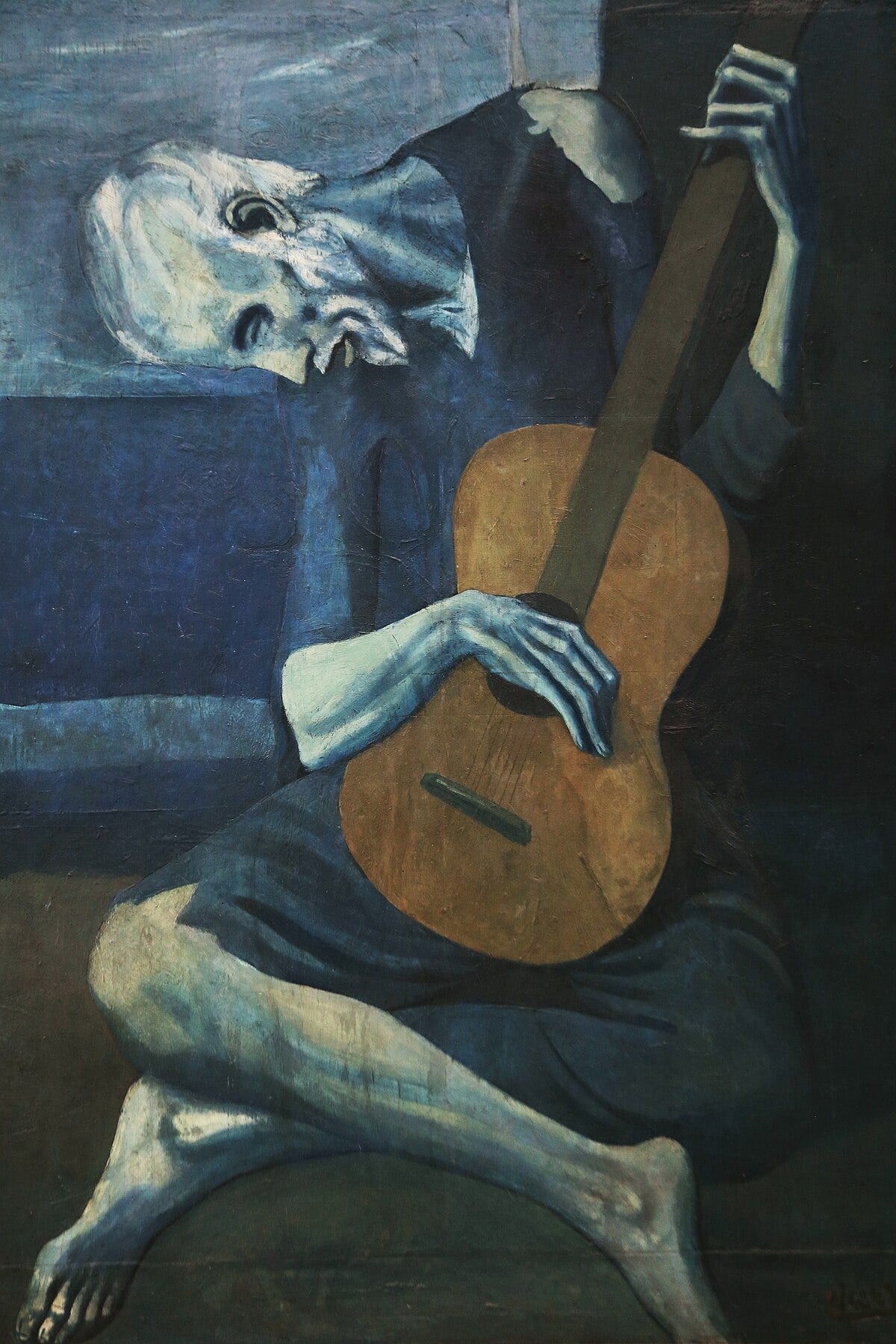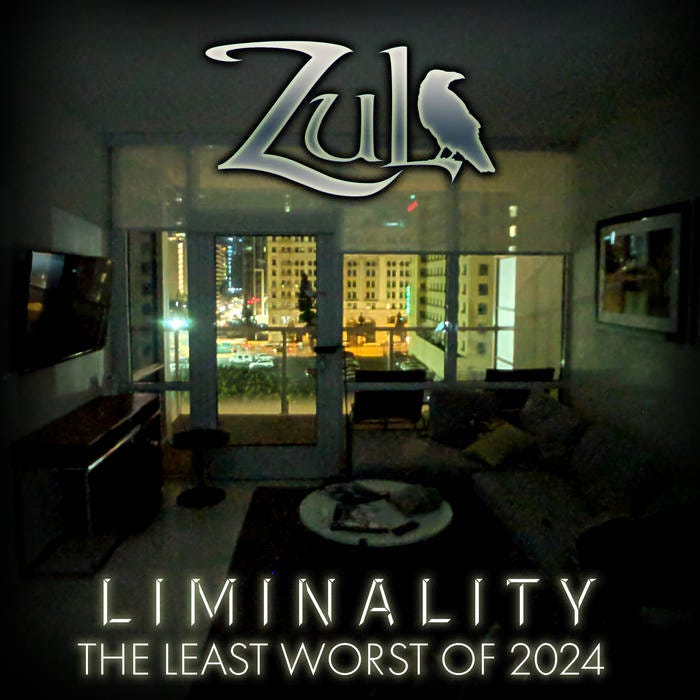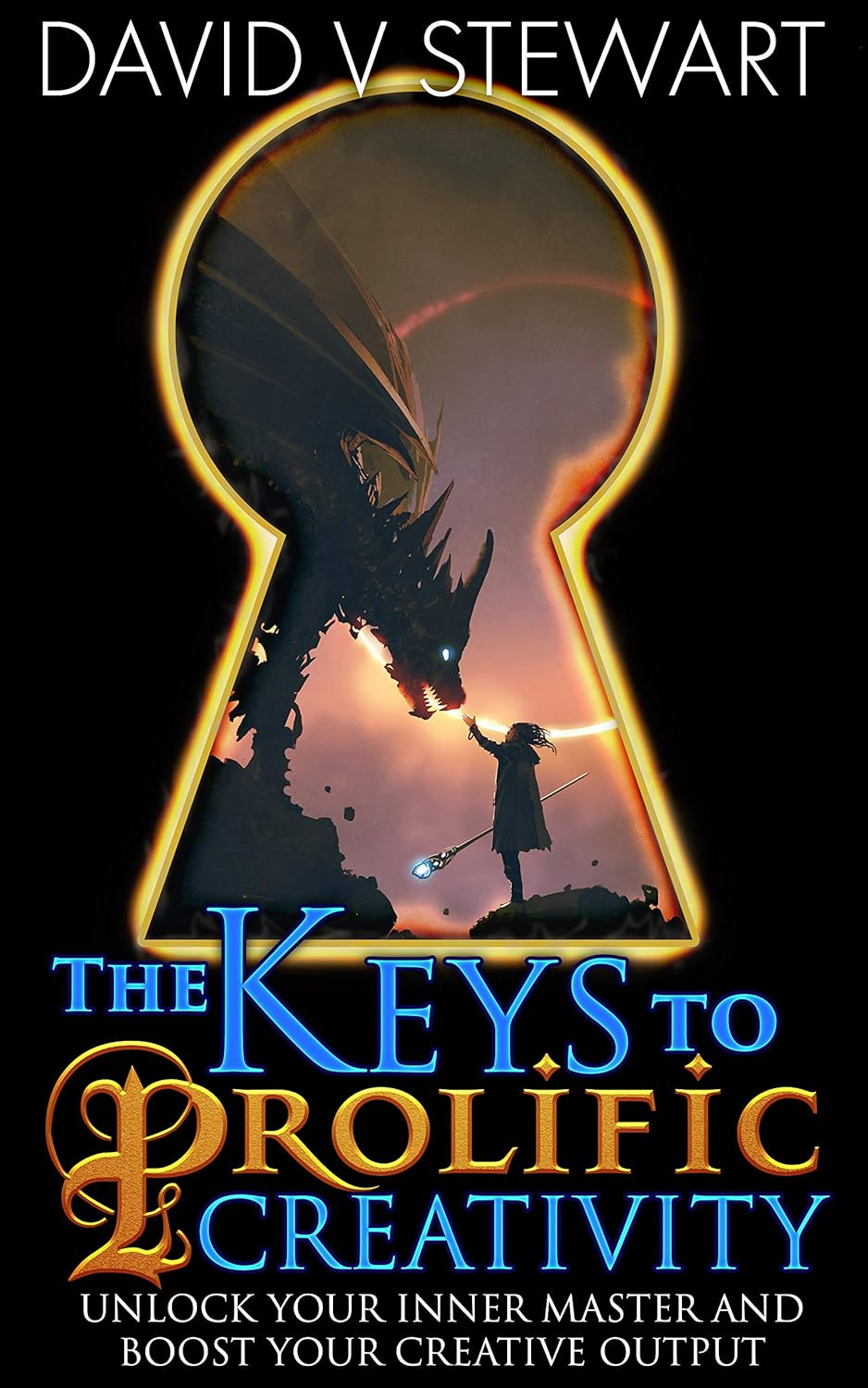One of the main ways I present artistic periods to students (or to you, dear reader) is to encapsulate them not just in a set range of years, but in an ethos that defines how the art of that period is made and to what purpose. This crosses over with the concept of zeitgeist, or a spirit of an age, but ethos, as I use i,t is more about what beliefs motivate the people making the art. My belief is that each artistic period, or, when being more granular, each region or scene, has an ethos shared by most of the artists that guides them toward the conclusions that are the art being made.
One can go into the technical innovations in painting in the late medieval moving into the Renaissance, such as the use of perspective, increasing use of realistic light, and better anatomical knowledge, and miss what guided these changes. The Renaissance, especially when looking at the artists and thinkers of northern Italian republics, had a humanistic ethos that viewed both man and creation as beautiful things worthy of accurate representation, and that humanity was emerging from darkness into greatness. This motivated the visual artists of the time to make art grander, more realistic, and more celebratory of the human form.
These motivations also translated into music, which became very complex. The predominant technique that defines the technical qualities of Renaissance music is polyphony, which is having multiple melodies occurring at once. This required a tremendous amount of skill to both compose and perform, such that modern professionals are often very challenged by the music of the period. Have a listen here:
This is, of course, religious music, and if it utilized the height of human power, it is, like much of the art of the time, directed toward God. While the ethos of the medieval tended to de-emphasize the identity of the artist in favor of its religious purpose, Renaissance music was now more frequently signed by the artist—another sign of the emphasis on man and (in the religious space) his connection with the divine.
I think there are similar beliefs and motivations that occur with each artistic period, going across multiple forms of media and uniting them, and these happen along with, or directly inspire, the various technical innovations of the age and the stylistic evolution between periods. Roughly, here are the various post-classical periods and how I view the ethos of each in abstract as a motto:
Medieval – “For the Glory of God and His Church.”
Renaissance – “Creation is beautiful, and art will reflect that perfection.”
Baroque – “Beauty through natural complexity and artistic skill”
Classical/Enlightenment – “One great subject, well supported and balanced to its best qualities.”
Romantic – “The heart of the artist.”
Post-Romantic – “Man and Myth, Passion and Warfare.”
Impressionist – “The precious, fleeting moment and the feeling of a time and place.”
Modern – “Man can make new beauty with the power of his mind and will.”
Post-Modern – “Anything can be art. All reactions to art are valid.”
Corporate – “What does the market want to see?”
Eclectic – “I have my own scene.”
Many of these “periods” are really artistic movements overlapping with each other, but the ethos is what drives and defines each of them. The difference between the Corporate and the Modern/Post Modern is really in the ethos and the different people making each. Post-modernism is largely academic (and therefore subsidized), while the corporate art of the 20th century is driven by profit, which is gained by producing art that regular people buy at scale. While film is a neutral medium, post-modernism produces a very different product from Hollywood because of the ethos that defines each. (For more, see my series on the Corporate Period).
I say we are now in the “Eclectic period” because that is how most people experience art now. Rather than being unified, it is highly diverse, with many small scenes or movements occurring simultaneously and containing different audiences and motivated by different ideas. Each small subculture has various identities associated with it, as well as tropes and stylistic norms that unify it. This is, in many ways, an outgrowth of the corporate period with its diverse genres, but what has decayed is a unifying “popular culture” in the west. I expect styles to diverge further as time goes on.
How people react to the art produced in each time or by each culture depends, I believe, on the ethos that created the art. Very few people legitimately believe that modern and post-modern art is aesthetically superior to that which preceded it. Even people who are steeped in the academic art world are, on some level, lying to themselves when they try to put Picasso on the same level as the old greats. His art is unique and interesting, but by attempting to qualify its beauty along the lines of older art, we are automatically judging it by some other ethos than what made it. It cannot compare to Rubens because it is in rebellion against the ethos that motivated Rubens. The modern is defined by an attempt to make new aesthetic systems, new beauty by and for man, while earlier periods are building on a belief that the natural, that which is made by God, is beautiful in itself and that art should, in some sense, emphasize this reality.
Music is perhaps an even better example. Arnold Schoenberg invented 12-tone technique for his music, which placed all the 12 different notes in an octave on equal footing. The technique of using tone rows was designed to democratize the notes, to destroy a sense of tonal foundation, and to tightly control constant dissonance. This system is in active rebellion against the way Western music had been made up to that time, with a tonal system derived from the natural, mathematical relationships between sound frequencies. For a deeper explanation, see my music theory series here:
I can leave it to you to judge the difference between Schoenberg and Wagner, but just know that most corporate art, which is most popular art for the last 120 years, is not building on the ethos of the modern but on the pre-modern. Illustrations in books are meant to be accurate representations of realistic things, not abstract movements in a new aesthetic system. Movies build on classic dramatic traditions, and their scores are mostly post-romantic in style. I think understanding the ethos of a style is a better way of defining these things than simply looking at a span of years, and it is essential to properly study the art of the 20th century. Ignoring this will allow the error of considering George Lucas to be a post-modern film maker or put John Cage and Elvis into the same category because they were making music at the same time.
I am an independent artist and musician. You can get my books by joining my Patreon, and you can listen to my current music on YouTube or buy my albums at BandCamp.










"Even people who are steeped in the academic art world are, on some level, lying to themselves when they try to put Picasso on the same level as the old greats."
I have long thought that the greatest painter of the 20th century was Norman Rockwell, not primarily for his technical skill (as great as that was), but because of how his work exemplified and celebrated the beauty to be found in the everyday life of his times. He was an artist for the people as a whole, not just artistic circles.
"The difference between the Corporate and the Modern/Post Modern is really in the ethos and the different people making each. Post-modernism is largely academic (and therefore subsidized), while the corporate art of the 20th century is driven by profit, which is gained by producing art that regular people buy at scale."
C. S. Lewis noted something similar, although he didn't use the term "corporate." He saw that art became split into "high-minded" and "popular" works.
"Until quite modern times - I think, until the time of the Romantics - nobody ever suggested that literature and the arts were an end in themselves. They 'belonged to the ornamental part of life', they provided 'innocent diversion'; or else they 'refined our manners' or 'incited us to virtue' or glorified the gods. The great music had been written for Masses, the great pictures painted to fill up a space on the wall of a noble patron's dining-room or to kindle devotion in a church; the great tragedies were produced either by religious poets in honour of Dionysus or by commercial poets to entertain Londoners on half-holidays.
It was only in the nineteenth century that we became aware of the full dignity of art. We began to 'take it seriously' as the Nazis take mythology seriously. But the result seems to have been a dislocation of the aesthetic life in which little is left for us but high-minded works which fewer and fewer people want to read or hear or see, and 'popular' works of which both those who make them and those who enjoy them are half ashamed. Just like the Nazis, by valuing too highly a real, but subordinate good, we have come near to losing that good itself." - C. S. Lewis, "First and Second Things"
"Until quite recently-until the latter part of the last century-it was taken for granted that the business of the artist was to delight and instruct his public. There were, of course, different publics; the street-songs and the oratorios were not addressed to the same audience (though I think a good many people liked both). And an artist might lead his public on to appreciate finer things than they had wanted at first; but he could do this only by being, from the first, if not merely entertaining, yet entertaining, and if not completely intelligible, yet very largely intelligible. All this has changed. In the highest aesthetic circles one now hears nothing about the artist's duty to us. It is all about our duty to him. He owes us nothing; we owe him 'recognition,' even though he has never paid the slightest attention to our tastes, interests, or habits. If we don't give it to him, our name is mud. In this shop, the customer is always wrong." - C. S. Lewis, "Good Work and Good Works"
"Many modern novels, poems, and pictures, which we are brow-beaten into 'appreciating,' are not good work because they are not work at all. They are mere puddles of spilled sensibility or reflection. When an artist is in the strict sense working, he of course takes into account the existing taste, interests, and capacity of his audience. These, no less than the language, the marble, or the paint, are part of his raw material; to be used, tamed, sublimated, not ignored nor defied. Haughty indifference to them is not genius nor integrity; it is laziness and incompetence. You have not learned your job. Hence, real honest-to-God work, so far as the arts are concerned, now appears chiefly in low-brow art; in the film, the detective story, the children's story. These are often sound structures; seasoned wood, accurately dovetailed, the stresses all calculated; skill and labour successfully used to do what is intended. Do not misunderstand. The high-brow productions may, of course, reveal a finer sensibility and profounder thought. But a puddle is not a work, whatever rich wines or oils or medicines have gone into it. 'Great works' (of art) and 'good works' (of charity) had better also be Good Work. Let choirs sing well or not at all." - C. S. Lewis, "Good Work and Good Works"
"I do most thoroughly agree with what you say about Art and Literature. To my mind they can only be healthy when they are either (a) admittedly aiming at nothing but innocent recreation or (b) definitely the handmaids of religious or at least moral truth. Dante is alright and Pickwick is alright. But the great serious irreligious art-art for art's sake-is all balderdash; and incidentally never exists when art is really flourishing. In fact one can say of Art as an author I recently read said of love (sexual love I mean), 'It ceases to be a devil when it ceases to be a god'. Isn't that well put? So many things-nay every real thing-is good if only it will be humble and ordinate." - C. S. Lewis, Letter to Dom Bede Griffiths, April 16, 1940
I like that the "Eclectic" period has allowed elements from older ethoi to come back. Theocracy has a couple excellent uses of polyphony in power metal--"I Am" https://youtu.be/O3TsVaFR870?t=337 and "Martyr" https://youtu.be/qJl7QYs1bS8?t=215